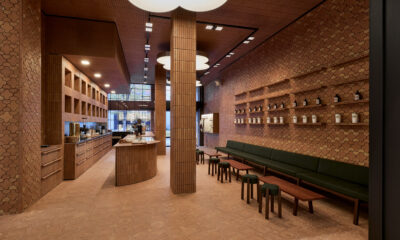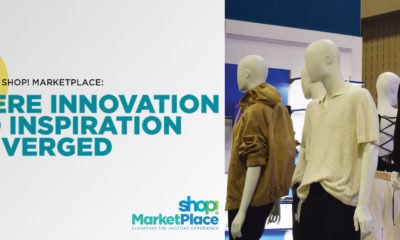The pop-up news teaser on my screen said, “Million-Dollar Funding for New Kentucky Retail.”
Proving that old dogs do old tricks, I still respond to nearly any mention of “retail” after 25 years in this industry like the sound of Pavlov’s ringing bell.
As I waited for my computer to open the site, I wondered whether they were talking about an industry hotshot like Samsung or Glossier or Publix or Warby Parker bringing a new concept to Louisville.
Nope. The money was actually for a new multi-use shopping mall in Lexington, Kentucky’s second city and site of the University of Kentucky campus.
Big-money investment for a new mall? In 2020? Hasn’t anybody there been reading the headlines? Malls are dead!
They’re not, of course. And I don’t just mean the decades-old retail model that is now being updated with event spaces and entertainment venues. I mean the staples of mall retail – the apparel, housewares, sporting goods, stationery and even sometimes the department stores.
Advertisement
Sure, people can buy anything online. Anyone in the world can. But there are parts of the country that don’t react as quickly to what we pinpoint as inevitably changing trends. When I first moved to Cincinnati from Atlanta, locals were fond of repeating the quote, generally attributed to Mark Twain, that, “When the end of the world comes, I want to be in Cincinnati because it's always 20 years behind the times.”
Whether it was true or not, or even Twain or not, it spoke to the historical solidity west of the Allegheny Mountains and east of the Rockies that people of a slower lifestyle will always feel comfortable with.
While specific names of the Lexington mall’s tenants were not revealed, it was announced that the place would have 12,750 square feet of retail space, along with a 125-room hotel, 33,750 feet of restaurant space and 13,575 square feet of office space.
Is that a strictly fly-over tendency? Not nearly. When I was visiting my kids in the New York area last Christmas, my daughter and son-in-law braved the season’s excesses to go to an upscale retail lifestyle center where it felt like everyone else in Westchester County, and likely Connecticut, too, was spending the Sunday afternoon prior to Christmas Eve.
All of these shoppers could easily have done their holiday shopping online in the months prior to that panicky last weekend of the season. But traffic jams, parking challenges and the crowds in the store notwithstanding – and on a wintry late-December afternoon, no less – there we all were, trudging, struggling through the masses and queuing up to buy Christmas goodies.
One of the big events of this retail year is the opening, this month, of American Dream in East Rutherford, N.J. (You may remember East Rutherford as a staple for major brands’ discount factory stores in the 1980s. Much of the tri-state metropolitan area went out there at one time or another for attractive prices on Polo, Calvin Klein, Donna Karan, Bass, Nike and the rest, at a time when the area was mostly still-undeveloped ex-swampland. In fact, the American Dream real estate was formerly the site of the Mills Corporation’s “Meadowlands Xanadu,” an unrealized stately pleasure dome after Mills filed for bankruptcy in 2007.)
Advertisement
Never mind the Dubai-knockoff indoor ski slope, skating rink, water park, theme park and the two 18-hole miniature golf courses. The appeal will be the power of the brands that will occupy the more than 350 retail doors. The American Dream website mentions Hermès, Dolce & Gabbana, Saint Laurent, Moncler, Saks, Tiffany’s, Zara, H&M, Uniqlo and Primark. And that would represent only 3 percent of the available doors.
So, then, the popularity of malls is not, after all, a fly-over remnant of the 20th century. American Dream’s projected market is the large New York metro area. And Hudson Yards, in New York, has all the international luxury brands plus a few upscale mall staples like Banana Republic, H&M, Kate Spade, Madewell, Sephora and Stuart Weitzman. And you know that they all will show up with high-concept store designs – because otherwise why bother?
Hudson Yards (and American Dream, for that matter) are not taking this huge investment plunge because they assume their shoppers are doing all of their shopping with thumb clicks. It became an early 21st century cliché, a cri de coeur reeking of desperation, that shoppers would always prefer the five senses of being in a store to the aridity of online retailing. The participation in a social world versus the loneliness of being at home in your pajamas.
Well today, nearly four decades into the digital revolution, a lot of retail owners and partners are anteing up BIG money to prove that mall retailing, in all its shapes and sizes, add-ons, improvements and novel wrinkles, is still the place to be if you want to touch the material.
As a journalist, writer, editor and commentator, Steve Kaufman has been watching the store design industry for 20-plus years. He has seen the business cycle through retailtainment, minimalism, category killers, big boxes, pop-ups, custom stores, global roll-outs, international sourcing, interactive kiosks, the emergence of China, the various definitions of “branding” and Amazon.com. He has reported on the rise of brand concept shops, the demise of brand concept shops and the resurgence of brand concept shops. He has been an eyewitness to the reality that nothing stays the same, except the retailer-shopper relationship.


 Headlines1 week ago
Headlines1 week ago
 John Ryan2 weeks ago
John Ryan2 weeks ago
 Headlines7 days ago
Headlines7 days ago
 Headlines2 weeks ago
Headlines2 weeks ago
 Headlines1 week ago
Headlines1 week ago
 Retail Buzz3 days ago
Retail Buzz3 days ago
 Headlines1 week ago
Headlines1 week ago
 Headlines1 week ago
Headlines1 week ago















